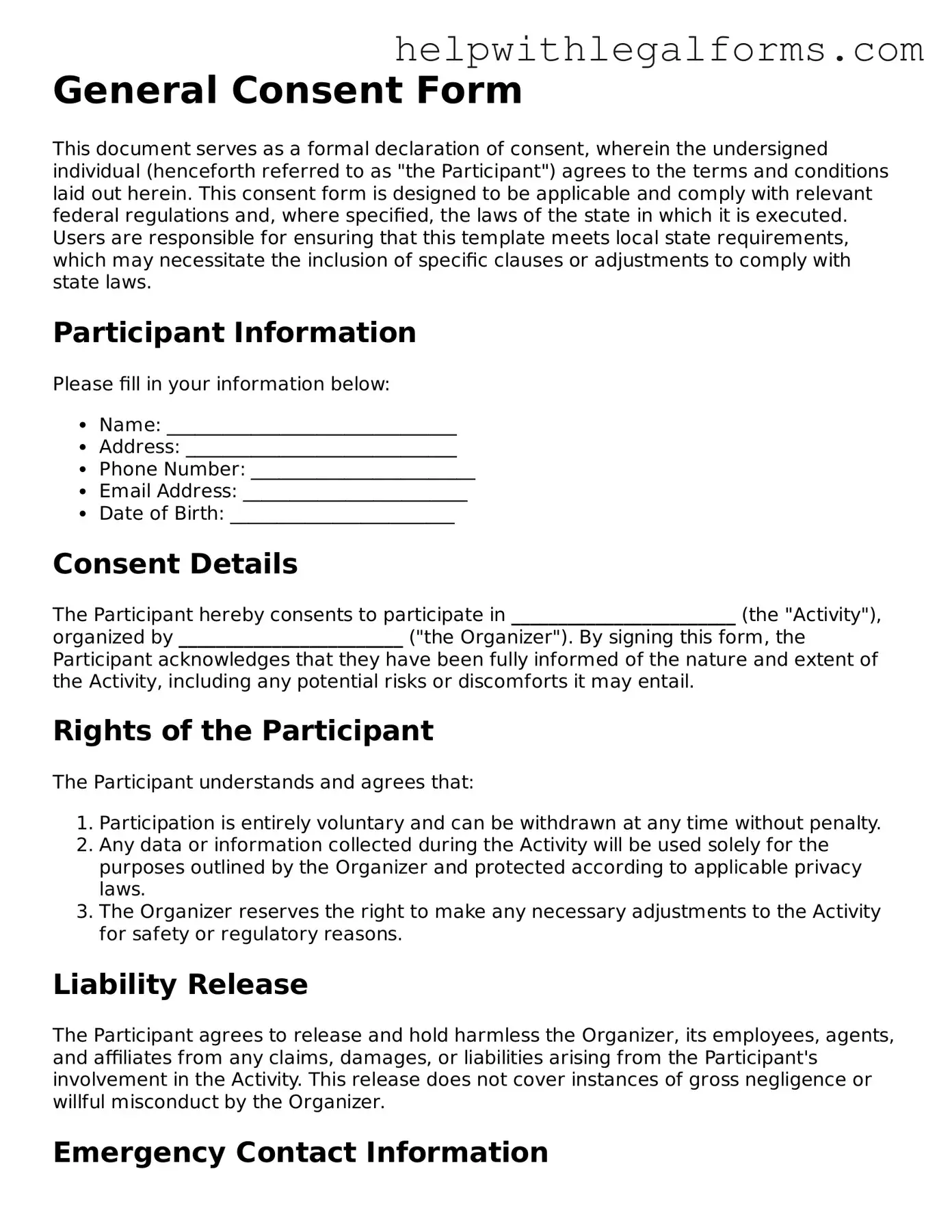General Consent Form
This document serves as a formal declaration of consent, wherein the undersigned individual (henceforth referred to as "the Participant") agrees to the terms and conditions laid out herein. This consent form is designed to be applicable and comply with relevant federal regulations and, where specified, the laws of the state in which it is executed. Users are responsible for ensuring that this template meets local state requirements, which may necessitate the inclusion of specific clauses or adjustments to comply with state laws.
Participant Information
Please fill in your information below:
- Name: _______________________________
- Address: _____________________________
- Phone Number: ________________________
- Email Address: ________________________
- Date of Birth: ________________________
Consent Details
The Participant hereby consents to participate in ________________________ (the "Activity"), organized by ________________________ ("the Organizer"). By signing this form, the Participant acknowledges that they have been fully informed of the nature and extent of the Activity, including any potential risks or discomforts it may entail.
Rights of the Participant
The Participant understands and agrees that:
- Participation is entirely voluntary and can be withdrawn at any time without penalty.
- Any data or information collected during the Activity will be used solely for the purposes outlined by the Organizer and protected according to applicable privacy laws.
- The Organizer reserves the right to make any necessary adjustments to the Activity for safety or regulatory reasons.
Liability Release
The Participant agrees to release and hold harmless the Organizer, its employees, agents, and affiliates from any claims, damages, or liabilities arising from the Participant's involvement in the Activity. This release does not cover instances of gross negligence or willful misconduct by the Organizer.
Emergency Contact Information
Please provide the contact information of someone who can be reached in case of an emergency during your participation in the Activity:
- Name: _______________________________
- Relationship: ________________________
- Phone Number: ________________________
Signature
By signing below, the Participant acknowledges that they have read, understood, and agreed to the terms and conditions of this consent form. This agreement is binding upon the Participant, their heirs, executors, administrators, and assigns.
Date: ________________________
Participant's Signature: ________________________
If the Participant is under the age of 18, a parent or legal guardian must sign below:
Parent/Guardian's Name: ________________________
Relationship to Participant: ________________________
Parent/Guardian's Signature: ________________________
Date: ________________________
